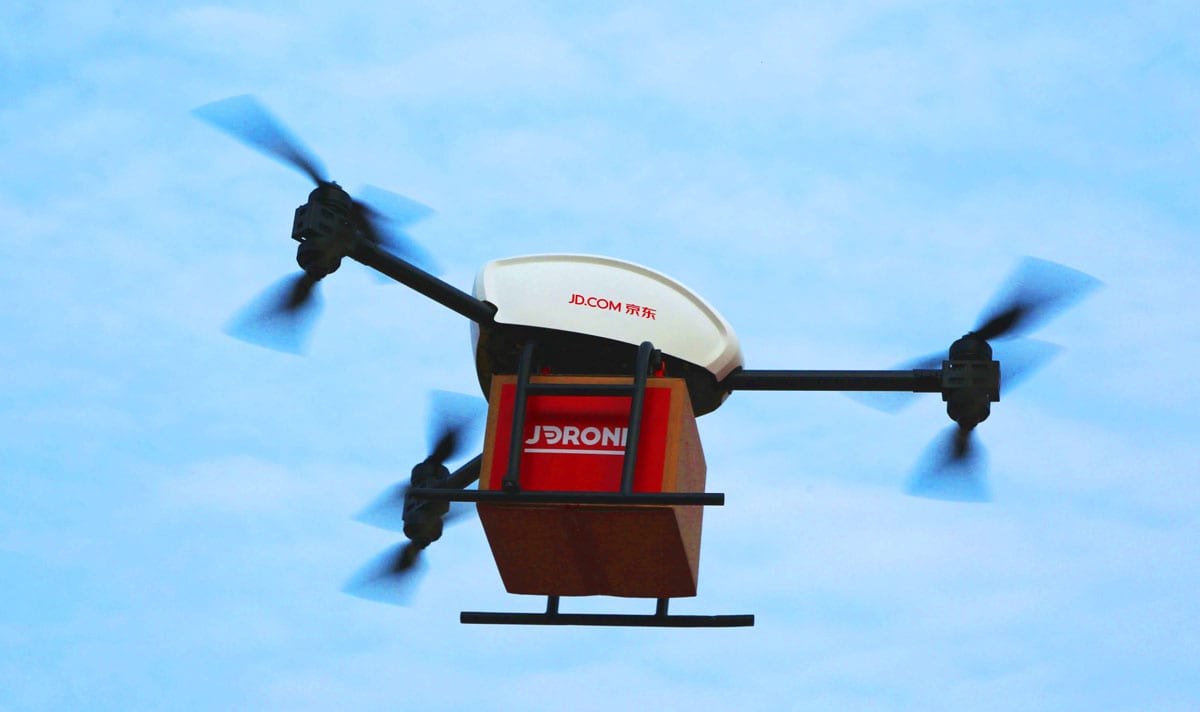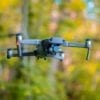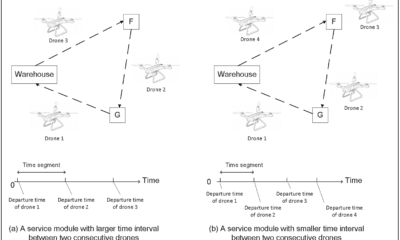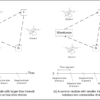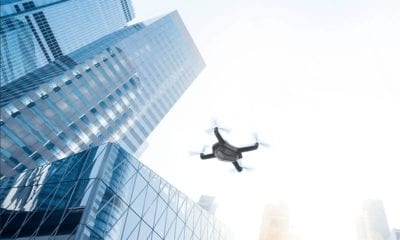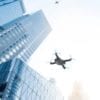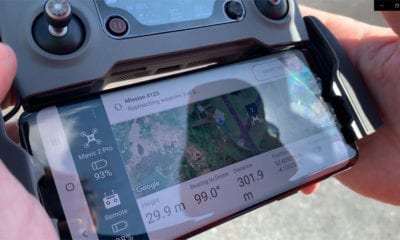China on Fast Track to Deliver Goods by Drone
China is on the fast track of drone delivery.
With China’s JD.com and Alibaba investing billions in building a logistics network consisting of both large and small drones, they are at the same time cooperating with regulatory agencies to develop regulations on the widespread use of delivery drones.
On the second day of China’s e-commerce giant JD.com’s mid-year sale, a drone took off from a playground in Xi’an and using a football-sized box, delivered one of the orders to a village in the mountains south of the city.
This six-rotor aircraft is one of about 40 drones owned by JD.com.
The machine is designed to deliver products such as smartphones and food to remote locations more quickly.
Distribution to such places, which is commonly done overland is too costly and too slow.
JD.com is competing with companies from all over the world to develop drones with performance, endurance and reliability to distribute goods on a large scale and solve the costly “last mile” problem faced by express delivery companies.
What distinguishes China from the rest of the world is that it can create all the other necessary conditions for drone delivery, including regulatory requirements, infrastructure and the world’s largest e-commerce market.
To coordinate this all, it needs data.
Therefore, last year, the Civil Aviation Administration of China (CAAC) approved JD.com and SF Holding to use UAVs to deliver parcels in certain rural areas.
Their idea is to build a network. The network includes not only small drones for final delivery, but also a complete system that includes large automated fixed-wing aircraft that take off from small airports and landing strips that facilitate the delivery of bulk shipments between warehouses.
One of China’s big advantages lies in the market. The country has both advanced drone technology and millions of consumers living in remote areas – trucks that are difficult to reach and sometimes impossible to reach. According to the National Bureau of Statistics, as of the end of 2017, China’s “rural” residents have exceeded 590 million.
“People living in the mountains are hard to reach through ground transportation, but they also have the right to shop!” said Cui Zheng, the manager of the JD.com drone project in northwest China. “We give them the same by using drones. The shopping experience and the same price.”
The competition between JD.com and Alibaba, whose subsidiary Ele.me launched their first food drone delivery service at the end of May, has intensified the competition for Chinese drone delivery.
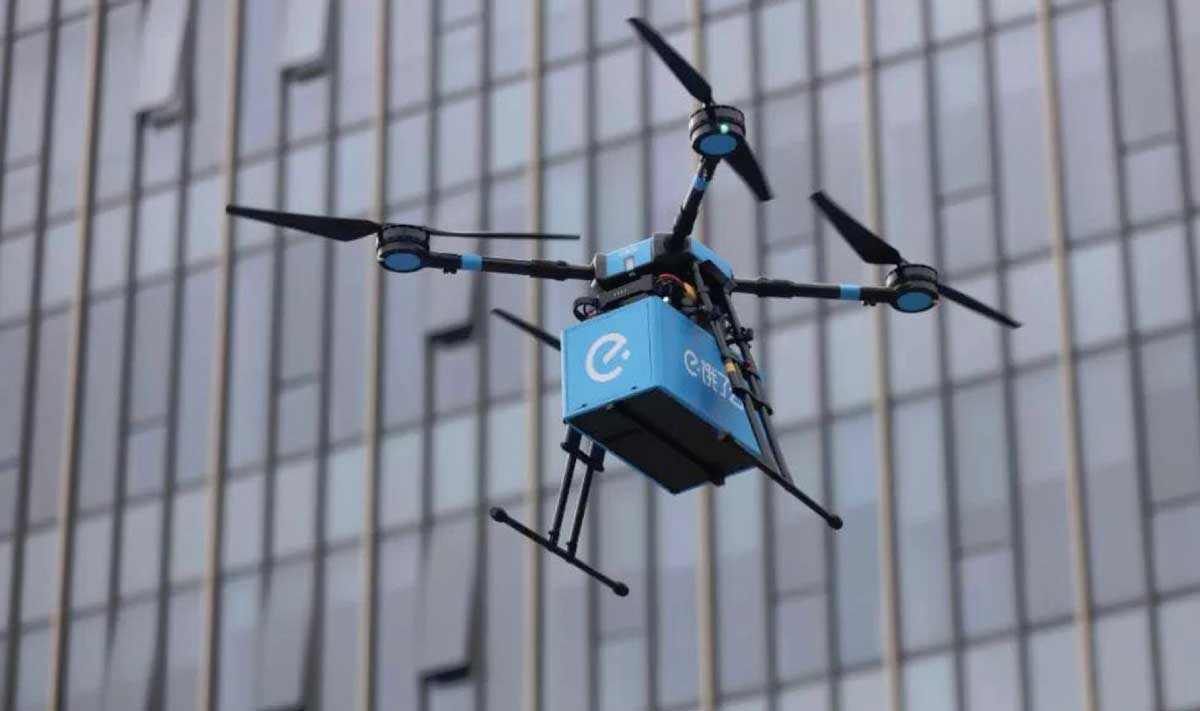
Ele.me’s food delivery drone | Wechat
Alibaba’s light asset business model means that it relies on partners to complete the distribution of goods, but its logistics department Cainiao is collaborating with Beihang UAV to develop cargo drones, who are developing one drone that can carry more than 1,500 kilometers of cargo per ton.
The drones used by JD.com and SF Holding are still only a small part of their daily operations, but for the Chinese government, drone technology provides a way to help rural areas reduce poverty and narrow the gap between the rich and the poor in urban centers.
This may also make China a template for other governments that want to draft regulations for civilian drones that will emerge in large numbers.
In a written response to Bloomberg, the Civil Aviation Authority stated that this is “an important opportunity for the Civil Aviation Administration of China to gain greater voice in the international aviation industry and to surpass its peers.”
JD.com said that the cost of parcel delivery in remote areas may be five times that of cities.
Both companies are reluctant to disclose how much the drone can help reduce delivery costs, but they expect that once drone technology can be applied on a large scale, they will cost less than those that use manual delivery.
Cui Zheng said that in an extreme case, the courier had to climb up and down the mountain for 4 hours before sending the parcel to a village on the edge of the cliff. With a drone, the parcel can be delivered in a few minutes.
SF’s goal is to integrate small drones that provide last-mile delivery and large drones that ship goods to distribution centers and traditional freighters to achieve the goal of all delivery in China within 36 hours.
“Using drones to transport one or two tons of cargo on regional lines can reduce transportation costs in underdeveloped areas to levels comparable to ground transportation on the main line,” said Li Dongqi, group vice president responsible for SF’s drone operations.
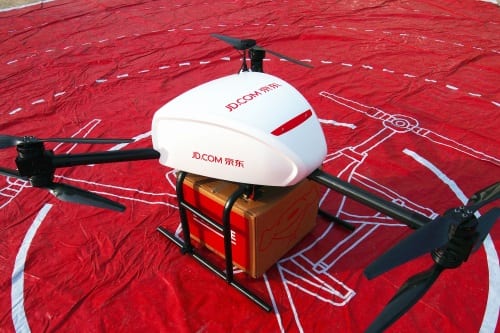
Source: JD.com
During the annual mid-year promotion, JD.com launched its first fixed-wing UAV, which was used to distribute expedited, high value-added goods. Since last year, SF has also been experimenting with similar drones.
In March, the Civil Aviation Authority introduced regulations on commercial drones, requiring operators to apply for operating permits for drones used for aerial spraying, aerial photography and aerial performance. However, these regulations do not apply to drones that deliver or transport passengers, and regulators still need to collect relevant data before drafting rules.
Cui Zheng said, “It would be too much trouble to supervise large drones like a manned plane.” He added that many of the current security requirements, such as life-saving equipment and display panels, are not needed for drones.
Governments in other countries are also forming regulations, but they still face enormous challenges.
In the United States, regulators are trying to solve the problem of how to build a low-altitude air traffic system (known as the LAANC) in order to ensure that drones do not hit other drones or traditional aircraft. Other issues include communication standards with drones and security and privacy concerns.
Even in China, the Civil Aviation Authority does not allow drones to fly at night, in the rain or in the breeze.
“We need to find more places to let drones fly to test its performance, identify risks, and find ways to deal with these risks,” said Li Dongqi of SF. He also stated that the Civil Aviation Authority could only develop a clear set of rules for large drones based on data collected from test flights.
Cui Zheng said that letting a larger drone fly into the sky would be the priority for JD.com this year. The company also piloted drone delivery services in Tanzania, Indonesia and Thailand.
Li Dongqi said that SF is seeking approval from the Civil Aviation Administration to conduct more tests in sparsely populated areas, especially for large drones.
“We are exploring an area where there is no rule yet,” Cui Zheng pointed out, “There will be confusion and uncertainty, but in the end it will require the introduction of regulations.”

